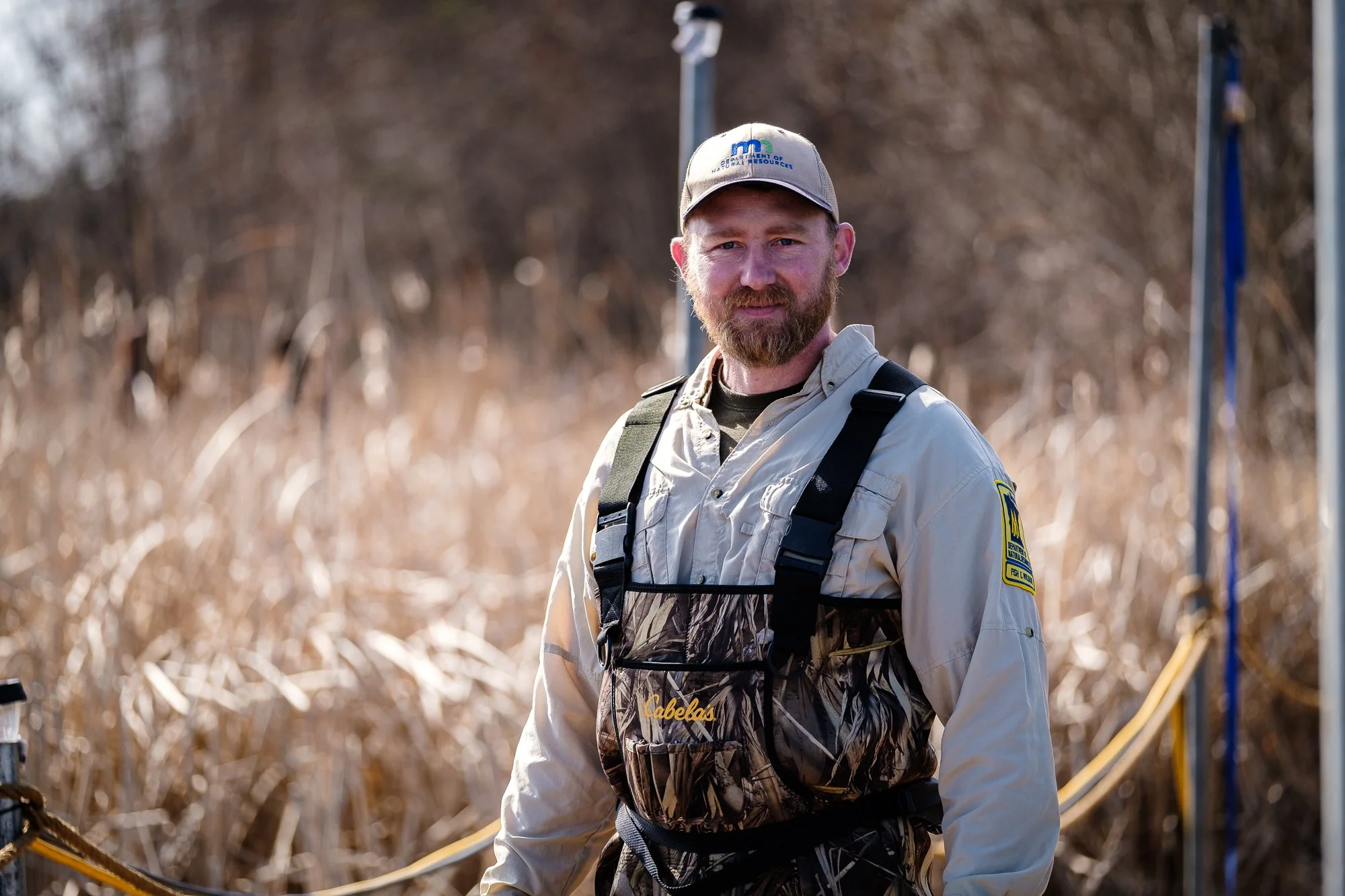Surface temperatures on both Lake Winnie and Cutfoot Sioux have settled into the mid-70s. On the big lake, 72-74 degrees is about the average, a slightly warmer average can be found on Cutfoot, where darker water warms mor quickly and retains heat longer.
An algae bloom has developed on Winnie, still light by last summer’s standards, the modest bloom is one reason fish have moved away from the deep, steep breaklines where anglers found them during the first few weeks of our fishing season. Insect hatches occurring across the lakes massive flats provides more encouragement for fish to move away from those deep edges and finally, shiner minnows moving away from shore, now form huge schools that hold on rock and weed structures on the flats.
Lake Winnie Walleye June 13, 2021
In-Fisherman referred to this period as the summer peak, a time when the food chain operates at full swing and fish of all shapes and sizes enjoy a smorgasbord, taking advantage of every food source that the lakes have to offer. We think of it as the time for guests to diversify, both in terms of fishing presentations, and in terms of fish location.
Walleyes, the most popular fish for Bowen Lodge guests have moved into 3 key areas. Shoreline related bars that extend out into the lakes deep water basin, sprawling mid-depth flats and shallow water structure like weed beds. In the past week alone, we have heard reports of walleyes being caught in depths ranging from 6 to 26 feet, depending on the type of structures where walleyes have been located.
On the bars, active walleyes are riding high on the breaklines. Key water depths range from 16 to 22 feet depending on the formation of structures. In some areas, fish can be found deeper, but many have noted that the fish found in deeper water are often smaller, much smaller in size than the ones located shallower. A good rule of thumb for folks fishing on the bars is to seek out the shallowest fish they can find, these will be the hungriest, most aggressive fish in the area. Often, there will be a wider range of sizes represented in fish found in these areas.
On the flats, walleye can be found on isolated rock and gravel patches, weed beds, around the edges of depressions, or holes and along soft tapering drops into the lakes deep water basin. Key depths depend entirely on the structure. One gravel bar may top off at 10 feet, and this will be where you should focus your effort. Another may top of in 15 feet, which would then be the depth to concentrate on. When it comes to fishing on the flats, we have learned that there are no limits to where fish can be found as long as there is structure to provide both food and shade.
Vegetation is begging to fill out, cabbage patches are green and healthy, so are other shallow water plants like the deeper growing Coontail patches. Green plants are important to walleyes, but fish of all species will be found co-mingling among them. At times, it might seem like the species are all mixed but look closer and you will see that some prefer one type of plant over another.
One example is Cabbage which gets a lot of attention, as it should. Because many of the “ambush feeding” fish species can be found there, walleyes are often pushed to the outskirts. Pike, crappie and bass will often inhabit the interior potions of a good cabbage patch, while roamers like walleye and perch are forced to hold on soft tapering flats adjacent to the plants. It’s a fine point, but the point is that your boat’s position in relation to vegetation will influence which fish you will catch.
Like fish locations, fishing presentations are widely diversified now too. Jig and minnow combinations continue to work, especially on shallow structure. But folks are catching fish using Lindy Rigs, wiggle worming, slip floats and spinners too. In fact, the faster moving presentation proved useful for one of the local guides on Sunday. A Little Joe Spinner, tipped with a minnow and trolled along the 14-foot breakline behind a ¾ ounce No Snagg Sinker, produced above average walleyes, along with some larger pike too.
Don’t show up with a huge supply of any one bait expecting it to cover you in all situations. Right now, it is better to have a little bit of everything, instead of a lot of your one personal favorite. Above all, be creative, this week we have seen examples firsthand of folks catching walleyes where they “were not supposed to be” at the time. If you have an idea, check it out, who knows? You could be tapping into your own, private fishing bonanza.
With the arrival of summer, panfish, bass and muskies are getting more attention. Anglers are finding all of them in areas where lush vegetation provides good cover. Except for small, isolated populations, almost all the crappie, sunfish and bass spawning activity has run its course. Anglers searching for panfish should focus on the outer edges of weed beds.
The most efficient way to search for panfish is to get up early, especially on a calm day. Many fish will be seen on the surface, feeding on insects, small minnows, and the like. Search lures for panfish include using small jigs tipped with plastic tails and spinners tipped with ½ night crawler. Using jigs, cast toward the vegetation and work them back toward the boat using a swim-drop-swim retrieve. For spinners, troll the weed edges at moderate speeds, .9 to 1.1 MPH is about right. Control your spinner depth using small bullet sinkers, 1/16-, 1/8- or 3/16-ounce weights are the most popular sizes.
Perch are where you find them right now. On cloudy, breezy days, they can be found on gravel patches and rock flats where they feed on crawfish. When the sun comes out, these crawfish feeders go into hiding, so your search should be centered around heavier cover and/or deeper water. Perch will begin “schooling up” soon, but for now, most of them are being caught by our guests are a by-product of their walleye fishing efforts.
We’ll have an update again next week, so be sure to check back. Remember too, if you’re in the area, stop by and say hello, we would love to chat and show you around the resort!

















